- Home
- Stephen King
Danse Macabre Page 12
Danse Macabre Read online
Page 12
But Hyde, of course, has another identity he can turn to. Jekyll, at last frightened back to reason, determines never to use the potion again. Then he discovers to his horror that the change has begun to occur spontaneously. He has created Hyde to escape the strictures of propriety, but has discovered that evil has its own strictures; in the end he has become Hyde's prisoner. The clergy hailed Jekyll and Hyde because they believed the book showed the grim results of allowing man's "baser nature" more than the shortest possible tether; modern readers are more apt to sympathize with Jekyll as a man looking for an escape route--if only for short periods--from the straitjacket of Victorian prudery and morality. Either way, when Utterson and Jekyll's butler, Poole, break into Jekyll's laboratory, Jekyll is dead . . . and it is the body of Hyde which they find. The worst horror of all has occurred; the man has died thinking like Jekyll and looking like Hyde, the secret sin (or the Mark of the Beast, if you prefer) which he hoped to conceal (or to Hyde, if you prefer) stamped indelibly on his face. He concludes his confession with the words, "Here then, as I lay down the pen and proceed to seal up my confession, I bring the life of that unhappy Dr. Jekyll to an end."
It's easy--too easy--to get caught up in the story of Jekyll and his ferocious alter ego as a religious parable told in penny-dreadful terms. It's a moral tale, sure, but it seems to me that it's also a close study of hypocrisy--its causes, its dangers, its damages to the spirit.
Jekyll is the hypocrite who falls into the pit of secret sin; Utterson, the book's real hero, is Jekyll's exact opposite. Because this seems important, not only to Stevenson's book but to the whole idea of the Werewolf, let me take a minute of your time to quote from the book again. Here's how he introduces Utterson to us on page one of Dr. Jekyll and Mr. Hyde: Mr. Utterson the lawyer was a man of rugged countenance that was never lighted by a smile; cold, scanty, and embarrassed in discourse; backward in sentiment; lean, long, dusty, dreary and yet somehow lovable.6 . . . He was austere with himself; drank gin when he was alone to mortify a taste for vintages; and though he enjoyed the theater, had not crossed the doors of one for twenty years.
About the Ramones, an amusing punk-rock band that surfaced some four years ago, Linda Ronstadt is on record as saying, "That music's so tight it's hemorrhoidal." You could say the same thing for Utterson, who fulfills the function of court stenographer in the book and still manages to come off as the story's most engaging character. He's a Victorian prig of the first water, of course, and one would fear for a son or daughter brought up by the old man, but Stevenson's point is that there is as little of the hypocrite in him as there is in any man living. ("We may sin in thought, word, or deed," the old Methodist credo goes, and I suppose that by thinking of fine vintages while he knocks off his gin-and-water, we could say that Utterson is a hypocrite in thought . . . but here we're entering a fuzzy gray area where the concept of free will seems harder to grasp: "The mind is a monkey," Robert Stone's protagonist muses in Dog Soldiers, and he is so right.) The difference between Utterson and Jekyll is that Jekyll would only drink gin to mortify a taste for vintages in public. In the privacy of his own library he's the sort of man who might well drink an entire bottle of good port (and probably congratulate himself on not having to share it, or any of his fine Jamaican cigars, either). Perhaps he would not want to be caught dead attending a risque play in the West End, but he is more than happy to go as Hyde. Jekyll does not want to mortify any of his tastes. He only wants to gratify them in secret.
9
What we're talking about here, at its most basic level, is the old conflict between id and superego, the free will to do evil or to deny it . . . or in Stevenson's own terms, the conflict between mortification and gratification. This old struggle is the cornerstone of Christianity, but if you want to put it in mythic terms, the twinning of Jekyll and Hyde suggests another duality: the aforementioned split between the Apollonian (the creature of intellect, morality, and nobility, "always treading the upward path") and the Dionysian (god of partying and physical gratification; the get-down-and-boogie side of human nature). If you try to take it any further than the mythic, you come damn close to splitting the body and mind altogether . . . which is exactly the impression Jekyll wants to give his friends: that he is a creature of pure mind, with no human tastes or needs at all. It's hard to picture the guy sitting on the jakes with a newspaper.
If we look at the Jekyll and Hyde story as a pagan conflict between man's Apollonian potential and his Dionysian desires, we see that the Werewolf myth--in nominal disguise--runs through a great many modern horror novels and movies.
Perhaps the best example of all is Alfred Hitchcock's film Psycho, although in all deference to the master, the idea was there for the taking in Robert Bloch's novel. Bloch, in fact, had been honing this particular vision of human nature in a number of previous books, including The Scarf (which begins with those wonderful, eerie lines: "Fetish? You name it. All I know is that I've always had to have it with me . . .") and The Deadbeat. These books are not, at least technically, horror novels; there is nary a monster or supernatural occurrence on view. They are labeled "suspense novels." But if we look at them with that Apollonian/Dionysian conflict in mind, we see that they are very much honor novels; each of them deals with the Dionysian psychopath locked up behind the Apollonian facade of normality . . . but slowly, dreadfully emerging. In short, Bloch has written a number of Werewolf novels in which he has dispensed with the hugger-mugger of the potion or the wolfsbane. What happened with Bloch when he ceased writing his Lovecraftian stories of the supernatural (and he never has, completely; see the recent Strange Eons) was not that he ceased being a horror writer; he simply shifted his perspective from the outside (beyond the stars, under the sea, on the Plains of Leng, or in the deserted belfry of a Providence, Rhode Island, church) to the inside . . . to the place where the Werewolf is. It may be that someday these three novels, The Scarf, The Deadbeat, and Psycho, will be anthologized as a kind of unified triptych, as were James M. Cain's The Postman Always Rings Twice, Double Indemnity, and Mildred Pierce--for in their own way, the novels that Robert Bloch wrote in the 1950s had every bit as much influence on the course of American fiction as did the Cain "heel-with-a-heart" novels of the 1930s. And although the method of attack is radically different in each case, both the novels of Cain and Bloch are great crime novels; the novels of both adopt a naturalistic view of American life; the novels of both explore the idea of protagonist as antihero; and the novels of both point up the central Apollonian/Dionysian conflict and thus become Werewolf novels.
Psycho, the best known of the three, deals with Norman Bates--and as played by Anthony Perkins in the Hitchcock film, Norman is about as tight-assed and hemorrhoidal as they come. To the observing world (or that small part of it that would care to observe the proprietor of a gone-to-seed backwater motel), Norman is as normal as they come. Charles Whitman, the Apollonian Eagle Scout who went on a Dionysian rampage from the top of the Texas Tower, comes immediately to mind; Norman seems like such a nice fellow. Certainly Janet Leigh sees no reason to fear him in the closing moments of her life.
But Norman is the Werewolf. Only instead of growing hair, his change is effected by donning his dead mother's panties, slip, and dress--and hacking up the guests instead of biting them. As Dr. Jekyll keeps secret rooms in Soho and has his own "Mr. Hyde door" at home, so we discover that Norman has his own secret place where his two personae meet: in this case it is a knothole behind a picture, which he uses to watch the ladies undress.
Psycho is effective because it brings the Werewolf myth home. It is not outside evil, predestination; the fault lies not in our stars but in ourselves. We know that Norman is only outwardly the Werewolf when he's wearing Mom's duds and speaking in Mom's voice; but we have the uneasy suspicion that inside he's the Werewolf all the time.
Psycho spawned a score of imitators, most of them immediately recognizable by their titles, which suggested more than a few toys in the attic: Straitjacket (Joan Cra
wford does the ax-wielding honors in this gritty if somewhat overplotted film, made from a Bloch script), Dementia-13 (Francis Coppola's first feature film), Nightmare (a Hammer picture), Repulsion. These are only a few of the children of Hitchcock's film, which was adapted for the screen by Joseph Stefano. Stefano went on to pilot television's Outer Limits, which we will get to eventually.
10
It would be ridiculous for me to suggest that all modern horror fiction, both in print and on celluloid, can be boiled down to these three archetypes. It would simplify things enormously, but it would be a false simplification, even with the Tarot card of the Ghost thrown in for good measure. It doesn't end with the Thing, the Vampire, and the Werewolf; there are other bogeys out there in the shadows as well. But these three account for a large bloc of modern horror fiction. We can see the blurry shape of the Thing Without a Name in Howard Hawks's The Thing (it turns out--rather disappointingly, I always thought--to be big Jim Arness tricked out as a vegetable from space); the Werewolf raises its shaggy head at Olivia de Havilland in Lady in a Cage and as Bette Davis in What Ever Happened to Baby Jane?; and we can see the shadow of the Vampire in such diverse films as Them! and George Romero's Night of the Living Dead and Dawn of the Dead . . . although in these latter two, the symbolic act of blood-drinking has been replaced by the act of cannibalism itself as the dead chomp into the flesh of their living victims.7
It is also undeniable that filmmakers seem to return again and again to these three great monsters, and I think that in large part it's because they really are archetypes; which is to say, clay that can be easily molded in the hands of clever children, which is exactly what so many of the filmmakers who work in the genre seem to be.
Before leaving these three novels behind, and any kind of in-depth analysis of nineteenth-century supernatural fiction with them (and if you'd like to pursue the subject further, may I recommend H. P. Lovecraft's long essay Supernatural Horror in Literature? It is available in a cheap but handsome and durable Dover paperback edition.), it might be wise to backtrack to the beginning and simply offer a tip of the hat to them for the virtues they possess as novels.
There always has been a tendency to see the popular stories of yesterday as social documents, moral tracts, history lessons, or the precursors of more interesting fictions which follow (as Polidori's The Vampyre foreran Dracula, or Lewis's The Monk, which in a way sets the stage for Mary Shelley's Frankenstein)--as anything, in fact, but novels standing on their own feet, each with its own tale to tell.
When teachers and students turn to the discussion of novels such as Frankenstein, Dr. Jekyll and Mr. Hyde, and Dracula upon their own terms--that is, as sustained works of craft and imagination--the discussion is often all too short. Teachers are more apt to focus on shortcomings, and students more apt to linger on such amusing antiquities as Dr. Seward's phonograph diary, Quincey P. Morris's hideously overdone drawl, or the monster's lucky grab-bag of philosophic literature.
It's true that none of these books approaches the great novels of the same period, and I will not argue that they do; you need only compare two books of roughly the same period--Dracula and Jude the Obscure, let's say--to make the point pretty conclusively. But no novel survives solely on the strength of an idea--nor on its diction or execution, as so many writers and critics of modern literature seem sincerely to believe . . . these salesmen and saleswomen of beautiful cars with no motors. While Dracula is no Jude, Stoker's novel of the Count continues to reverberate in the mind long after the more ghoulish and clamorous Varney the Vampyre has grown silent; the same is true of Mary Shelley's handling of the Thing Without a Name and Robert Louis Stevenson's handling of the Werewolf myth.
What the would-be writer of "serious" fiction (who would relegate plot and story to a place at the end of a long line headed by diction and that smooth flow of language which most college writing instructors mistakenly equate with style) seems to forget is that novels are engines, just as cars are engines; a Rolls Royce without an engine might as well be the world's most luxurious begonia pot, and a novel in which there is no story becomes nothing but a curiosity, a little mental game. Novels are engines, and whatever we might say about these three, their creators stoked them with enough invention to run each fast and hot and clean.
Oddly enough, only Stevenson was able to stoke the engine successfully more than once. His adventure novels continue to be read, but Stoker's later books, such as The Jewel of Seven Stars and The Lair of the White Worm, are largely unheard-of and unread except by the most rabid fantasy fans.8 Mary Shelley's later gothics have similarly fallen into almost total obscurity.
Each of the three novels we've been discussing is remarkable in some way, not just as a horror tale or as a suspense yarn, but as an example of a much wider genre: that of the novel itself.
When Mary Shelley can leave off belaboring the philosophical implications of Victor Frankenstein's work, she gives us several powerful scenes of desolation and grim horror--most notably, perhaps, in the silent polar wastes as this mutual dance of revenge draws to its close.
Of the three, Bram Stoker is perhaps the most energetic. His book may seem overlong to modern readers, and to modern critics who have decided that one should not be expected to devote any more time to a work of popular fiction than one might devote to a made-for-TV movie (the belief seeming to be that the two are interchangeable), but during its course we are rewarded--if that's the right word--with scenes and images worthy of Dore: Renfield spreading his sugar with all the unflagging patience of the damned; the staking of Lucy; the beheading of the weird sisters by Van Helsing; the Count's final end, which comes in a hail of gunfire and a scary race against darkness.
Dr. Jekyll and Mr. Hyde is a masterpiece of concision--the verdict of Henry James, not myself. In that indispensable little handbook by Wilfred Strunk and E. B. White, The Elements of Style, the thirteenth rule for good composition reads simply: "Omit needless words." Along with Stephen Crane's Red Badge of Courage, Henry James's The Turn of the Screw, James M. Cain's The Postman Always Rings Twice, and Douglas Fairbairn's Shoot, Stevenson's economy-sized horror story could serve as a textbook example for young writers on how Strunk's Rule 13--the three most important words in all of the textbooks ever written on the technique of composition--is best applied. Characterizations are quick but precise; Stevenson's people are sketched but never caricatured. Mood is implied rather than belabored. The narrative is as chopped and lowered as a kid's hot rod.
We'll leave where we picked this up, with the wonder and terror these three great monsters continue to create in the minds of readers. The most overlooked facet of each may be that each succeeds in overleaping reality and entering a world of total fantasy. But we are not left behind in this leap; we are brought along and allowed to view these archetypes of Werewolf, Vampire, and Thing not as figures of myth but as figures of near reality--which is to say, we are brought along for the ride of our lives. And this, at least, surpasses "good."
Man . . . that's great.
CHAPTER IV
An Annoying Autobiographical Pause
Early on, I mentioned that trying to deal successfully with the phenomenon of terror and horror as a media/cultural event during the last thirty years would be impossible without a slice of autobiography. It seems to me that the time to make good on that threat has now arrived. What a drag. But you're stuck with it, if only because I cannot divorce myself from a field in which I am mortally involved.
Readers who find themselves inclining toward some genre on a regular basis--western, private-eye stories, drawing-room mysteries, science fiction, or flat-out adventure yarns--seem rarely to feel the same desire to psychoanalyze their favorite writers' interests (and their own) as do the readers of horror fiction. Secretly or otherwise, there is the feeling that the taste for horror fiction is an abnormal one. I wrote a fairly long essay at the beginning of a book of mine (Night Shift), trying to analyze some of the reasons why people read horror fiction and why I write it
. I don't have any interest in reheating that hash here; if you're interested in pursuing that subject, I recommend the introduction to you; all my relatives loved it.
The question here is a more esoteric one: Why do people have such an interest in my interest--and in their own? I believe that, more than anything else, it's because we all have a postulate buried deep in our minds: that an interest in horror is unhealthy and aberrant. So when people say, "Why do you write that stuff?" they are really inviting me to lie down on the couch and explain about the time I was locked in the cellar for three weeks, or my toilet training, or possibly some abnormal sibling rivalry. Nobody wants to know if Arthur Hailey or Harold Robbins took an unusually long time learning to use the potty, because writing about banks and airports and How I Made My First Million are subjects which seem perfectly normal. There is something totally American in wanting to know how things work (which goes a long way toward explaining the phenomenal success of the Penthouse Forum, I think; what all those letters are really discussing is the rocketry of intercourse, the possible trajectories of oral sex and the how-to of various exotic positions--all as American as apple pie; Forum is simply a sexual plumbing manual for the enthusiastic do-ityourselfer), but something unsettlingly alien about a taste for monsters, haunted houses, and the Thing that Crawled Out of the Crypt at Midnight. Questioners automatically turn into reasonable facsimiles of that amusing comic-strip psychiatrist Victor De Groot, ignoring the fact that making things up for money--which is what any writer of fiction does--is a pretty bizarre way to earn a living.
In March of 1979, I was invited to be one of three speakers on a panel discussing horror at an event known as the Ides of Mohonk (a once-yearly gathering of mystery writers and fans sponsored by Murder Ink, a nifty mystery-and-detection bookshop in Manhattan). During the course of the panel discussion I told a story that my mother had told me about myself--the event occurred when I was barely four, so perhaps I can be excused for remembering her story of it but not the actual event.

 The Stand
The Stand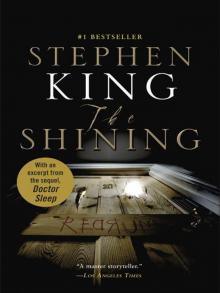 The Shining
The Shining It
It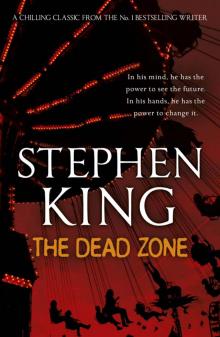 The Dead Zone
The Dead Zone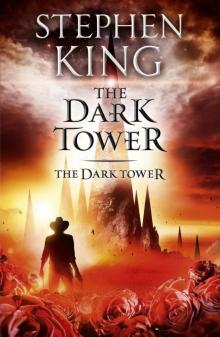 The Dark Tower
The Dark Tower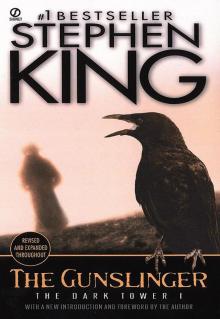 The Gunslinger
The Gunslinger Song of Susannah
Song of Susannah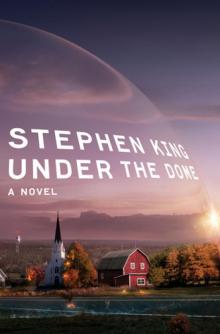 Under the Dome
Under the Dome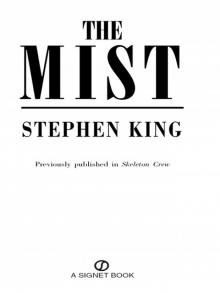 The Mist
The Mist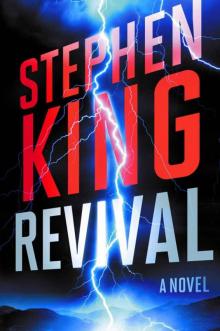 Revival
Revival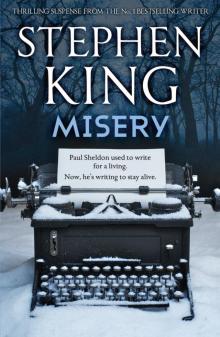 Misery
Misery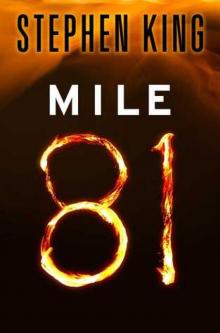 Mile 81
Mile 81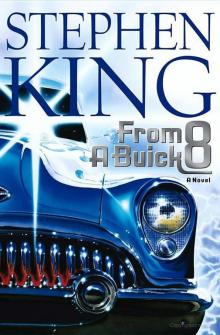 From a Buick 8
From a Buick 8 Just After Sunset
Just After Sunset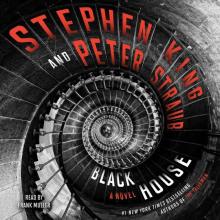 Black House
Black House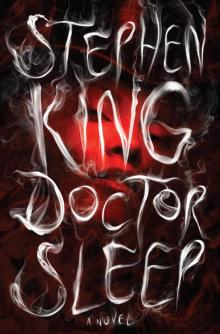 Doctor Sleep
Doctor Sleep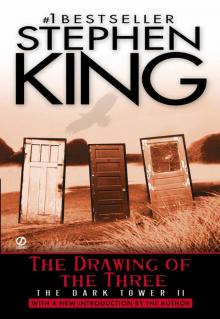 The Drawing of the Three
The Drawing of the Three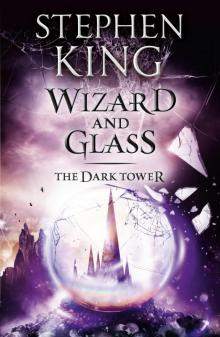 Wizard and Glass
Wizard and Glass Dolores Claiborne
Dolores Claiborne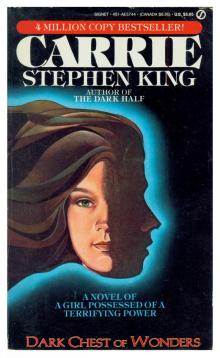 Carrie
Carrie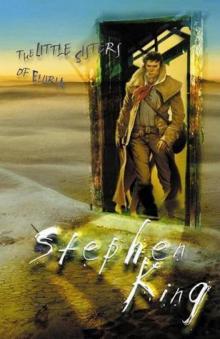 The Little Sisters of Eluria
The Little Sisters of Eluria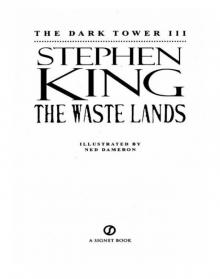 The Waste Lands
The Waste Lands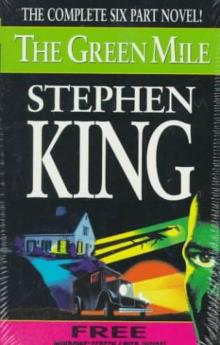 The Green Mile
The Green Mile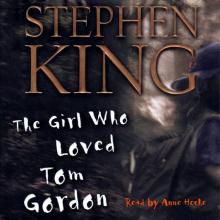 The Girl Who Loved Tom Gordon
The Girl Who Loved Tom Gordon Cujo
Cujo The Outsider_A Novel
The Outsider_A Novel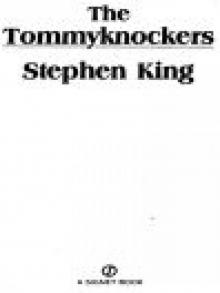 The Tommyknockers
The Tommyknockers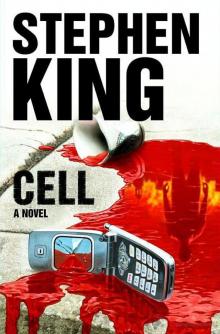 Cell
Cell Pet Sematary
Pet Sematary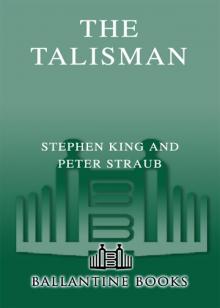 The Talisman
The Talisman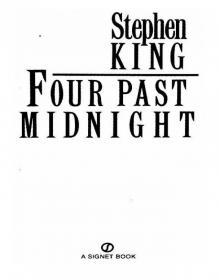 Four Past Midnight
Four Past Midnight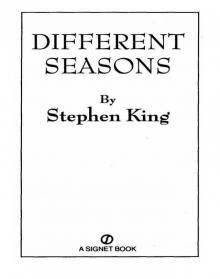 Different Seasons
Different Seasons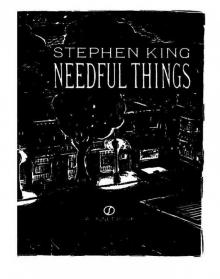 Needful Things
Needful Things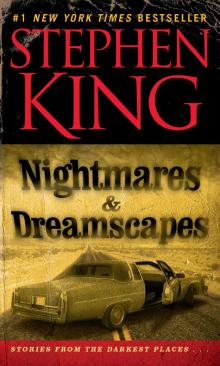 Nightmares and Dreamscapes
Nightmares and Dreamscapes Christine
Christine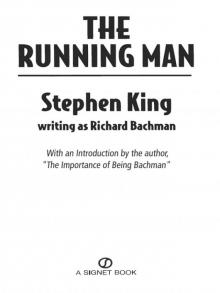 The Running Man
The Running Man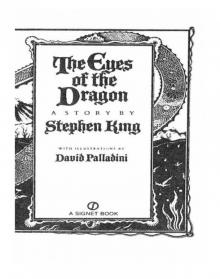 The Eyes of the Dragon
The Eyes of the Dragon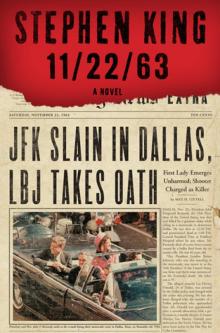 11/22/63
11/22/63 Firestarter
Firestarter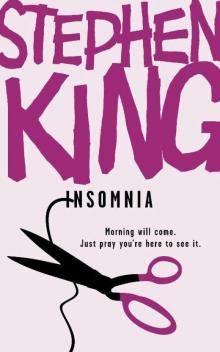 Insomnia
Insomnia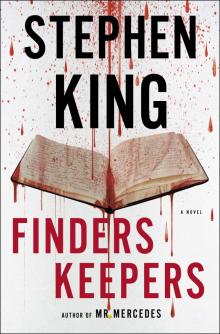 Finders Keepers
Finders Keepers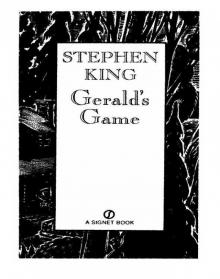 Gerald's Game
Gerald's Game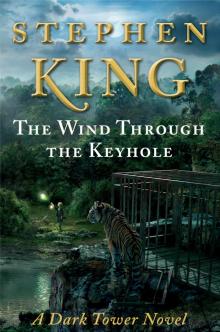 The Wind Through the Keyhole
The Wind Through the Keyhole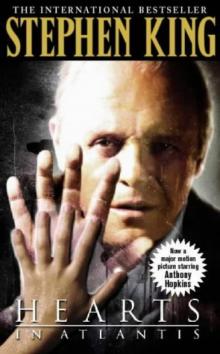 Hearts in Atlantis
Hearts in Atlantis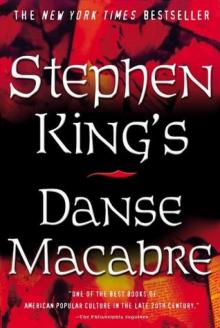 Danse Macabre
Danse Macabre Thinner
Thinner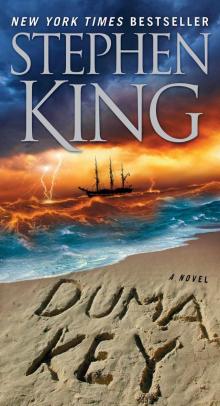 Duma Key
Duma Key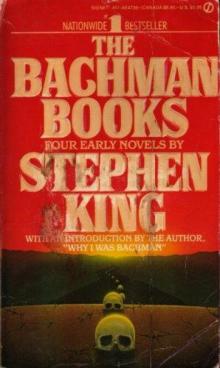 The Bachman Books
The Bachman Books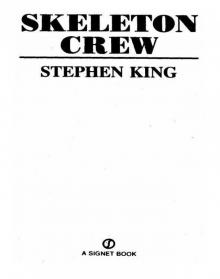 Skeleton Crew
Skeleton Crew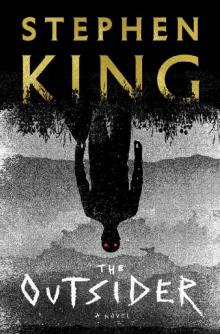 The Outsider-Stephen King
The Outsider-Stephen King Full Dark, No Stars
Full Dark, No Stars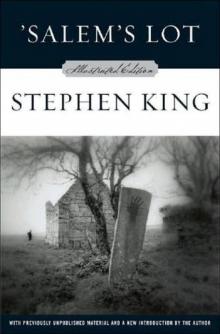 Salem's Lot
Salem's Lot Bag of Bones
Bag of Bones Desperation
Desperation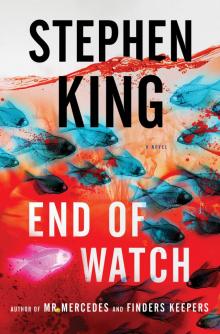 End of Watch
End of Watch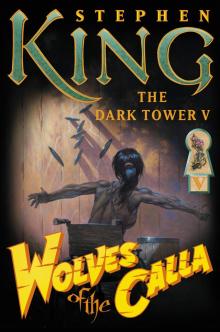 Wolves of the Calla
Wolves of the Calla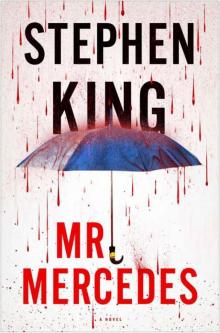 Mr. Mercedes
Mr. Mercedes Billy Summers
Billy Summers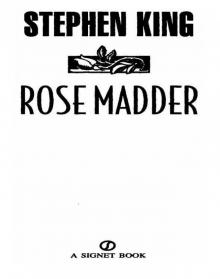 Rose Madder
Rose Madder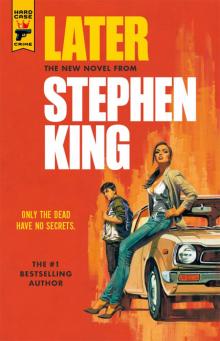 Later
Later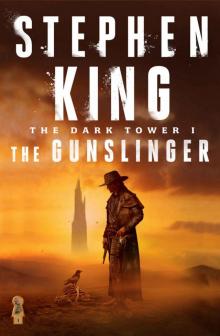 Gunslinger
Gunslinger The Langoliers
The Langoliers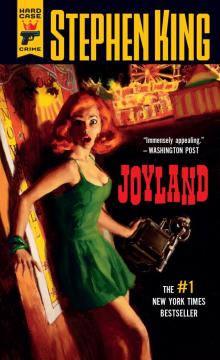 Joyland
Joyland If It Bleeds
If It Bleeds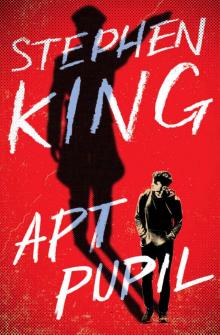 Apt Pupil (Scribner Edition)
Apt Pupil (Scribner Edition) Flight or Fright
Flight or Fright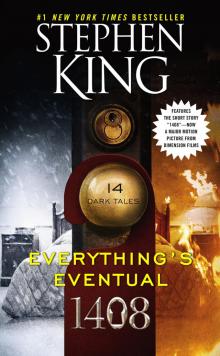 Everything's Eventual: 14 Dark Tales
Everything's Eventual: 14 Dark Tales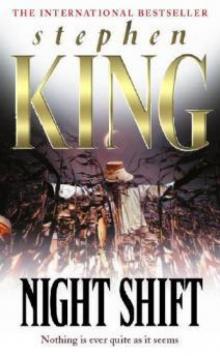 Night Shift
Night Shift The Dark Half
The Dark Half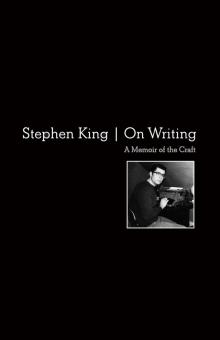 On Writing
On Writing The Institute
The Institute A Death
A Death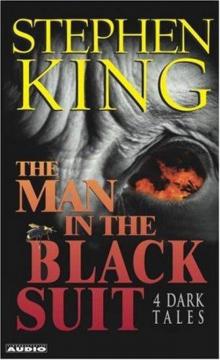 The Man in the Black Suit : 4 Dark Tales
The Man in the Black Suit : 4 Dark Tales Bullet
Bullet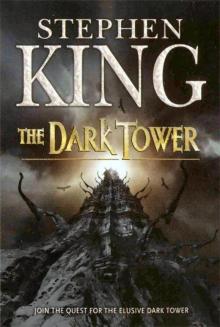 The Dark Tower tdt-7
The Dark Tower tdt-7 Chiral Mad 3
Chiral Mad 3 Big Driver
Big Driver Stephen King: The Green Mile
Stephen King: The Green Mile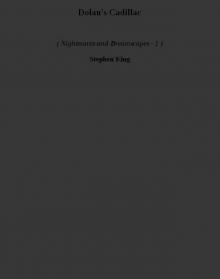 Dolan's Cadillac nad-1
Dolan's Cadillac nad-1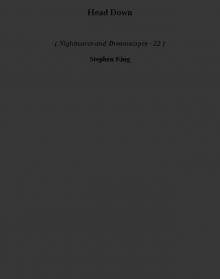 Head Down nad-22
Head Down nad-22 The Doctor's Case
The Doctor's Case Luckey Quarter
Luckey Quarter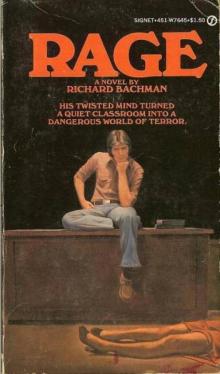 Rage (richard bachman)
Rage (richard bachman)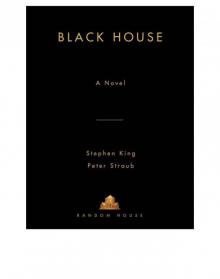 Black House js-2
Black House js-2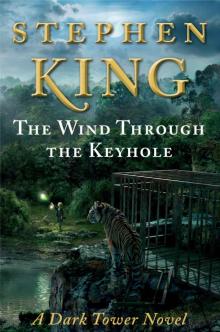 The Wind Through the Keyhole (Dark Tower)
The Wind Through the Keyhole (Dark Tower)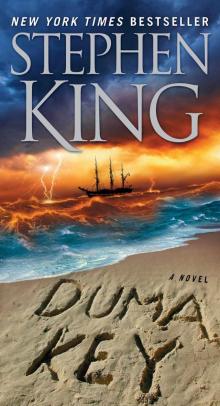 Duma Key: A Novel
Duma Key: A Novel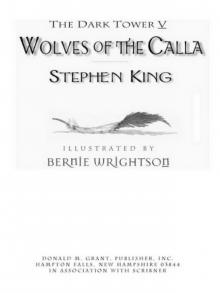 Dark Tower V, The
Dark Tower V, The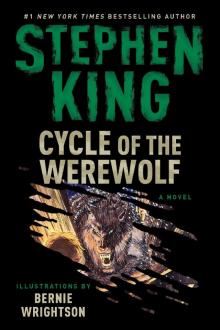 Cycle of the Werewolf
Cycle of the Werewolf AUTOPSY ROOM FOUR
AUTOPSY ROOM FOUR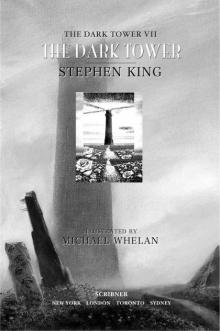 Dark Tower VII, The (v. 7)
Dark Tower VII, The (v. 7) Gramma
Gramma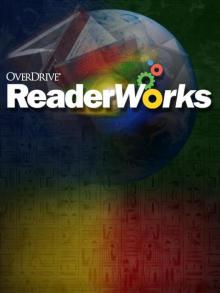 Suffer the Little Children
Suffer the Little Children Chinga
Chinga Word Processor of the Gods
Word Processor of the Gods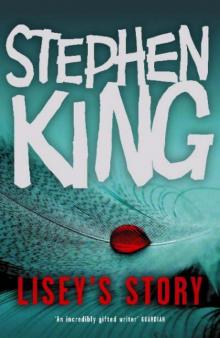 Lisey’sStory
Lisey’sStory Dark Tower V (Prologue)
Dark Tower V (Prologue)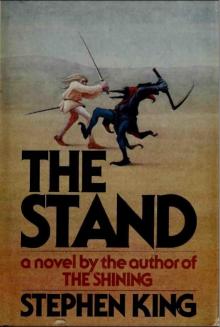 The Stand (Original Edition)
The Stand (Original Edition)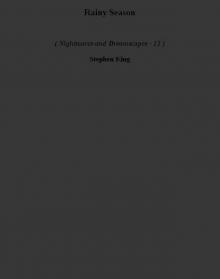 Rainy Season nad-13
Rainy Season nad-13 Transgressions
Transgressions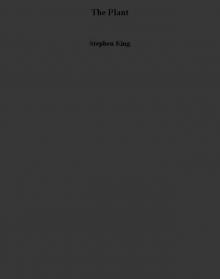 The Plant
The Plant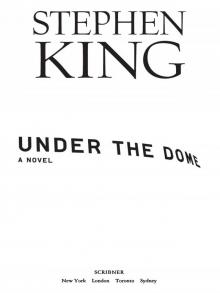 Under the Dome: A Novel
Under the Dome: A Novel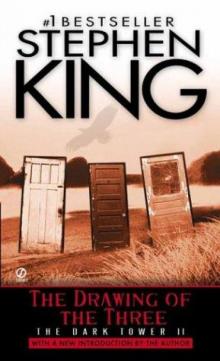 The Dark Tower II: The Drawing of the Three
The Dark Tower II: The Drawing of the Three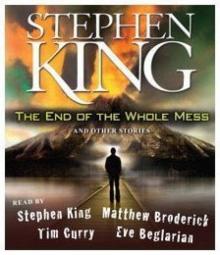 The End of the Whole Mess:
The End of the Whole Mess: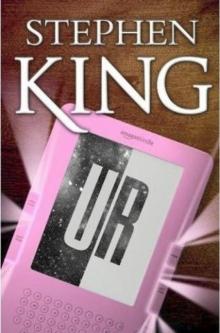 Ur
Ur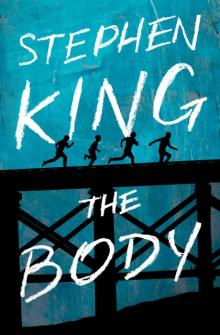 The Body
The Body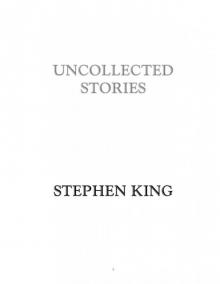 Uncollected Stories 2003
Uncollected Stories 2003 Chattery Teeth
Chattery Teeth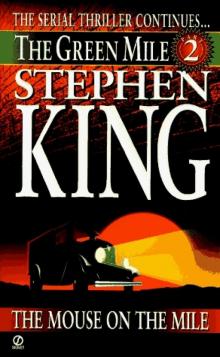 The Mouse on the Mile
The Mouse on the Mile The Cat from Hell
The Cat from Hell![The Drawing of the Three [The Dark Tower II] Read online](http://i1.bookreadfree.com/i/03/25/the_drawing_of_the_three_the_dark_tower_ii_preview.jpg) The Drawing of the Three [The Dark Tower II]
The Drawing of the Three [The Dark Tower II] Cell: A Novel
Cell: A Novel Uncle Otto's Truck
Uncle Otto's Truck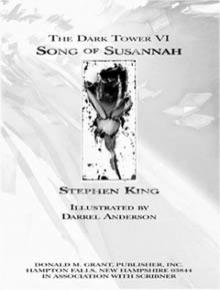 Song of Susannah dt-6
Song of Susannah dt-6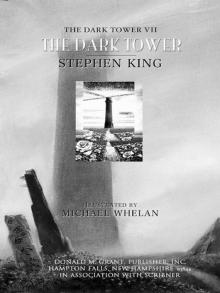 The Dark Tower VII
The Dark Tower VII Head Down
Head Down Sneakers
Sneakers Crouch End
Crouch End Outsider
Outsider End of Watch: A Novel (The Bill Hodges Trilogy Book 3)
End of Watch: A Novel (The Bill Hodges Trilogy Book 3) Revival: A Novel
Revival: A Novel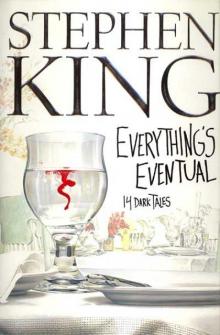 Everything's Eventual skssc-4
Everything's Eventual skssc-4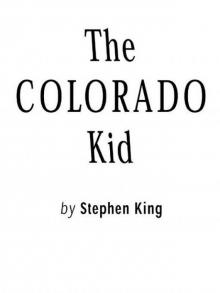 The Colorado Kid
The Colorado Kid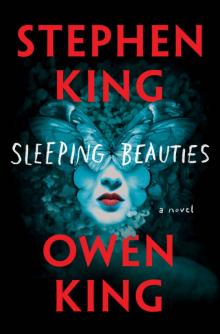 Sleeping Beauties: A Novel
Sleeping Beauties: A Novel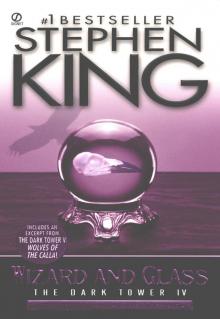 The Dark Tower IV Wizard and Glass
The Dark Tower IV Wizard and Glass A Book of Horrors
A Book of Horrors Four Past Midnight - 3 - Secret Window, Secret Garden
Four Past Midnight - 3 - Secret Window, Secret Garden The House on Maple Street
The House on Maple Street Sometimes They Come Back
Sometimes They Come Back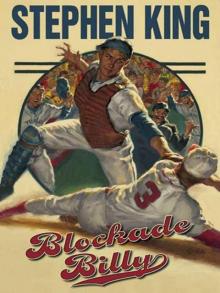 Blockade Billy
Blockade Billy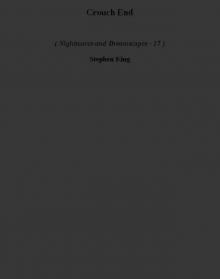 Crouch End nad-17
Crouch End nad-17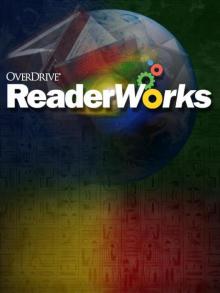 Lunch at the Gotham Cafe
Lunch at the Gotham Cafe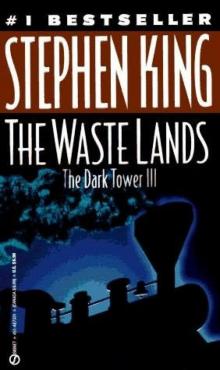 The Waste Lands dt-3
The Waste Lands dt-3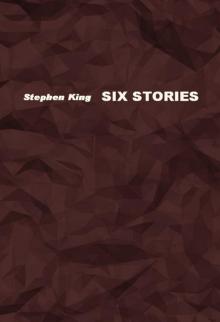 Six Stories
Six Stories A Face in the Crowd
A Face in the Crowd Case
Case Four Past Midnight - 2 - The Langoliers
Four Past Midnight - 2 - The Langoliers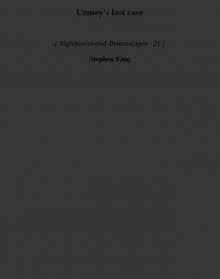 Umney's last case nad-21
Umney's last case nad-21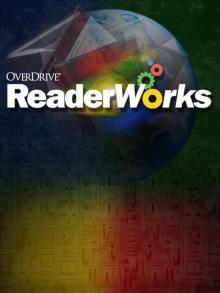 Survivor Type
Survivor Type Guns (Kindle Single)
Guns (Kindle Single) You Know They Got a Hell of a Band
You Know They Got a Hell of a Band The Jaunt
The Jaunt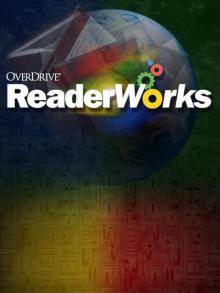 In A Half World Of Terror
In A Half World Of Terror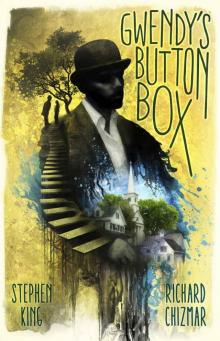 Gwendy's Button Box
Gwendy's Button Box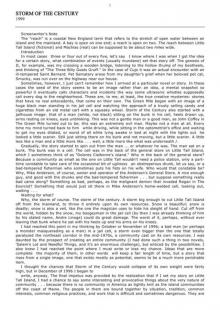 Storm of the Century
Storm of the Century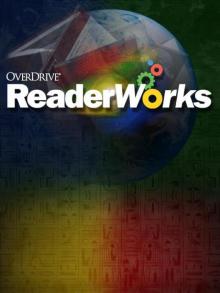 The Jaunt. Travel
The Jaunt. Travel Roadwork
Roadwork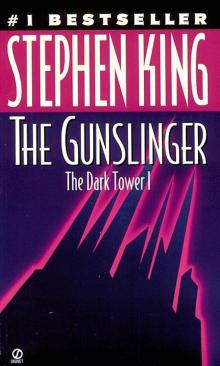 Darktower 1 - The Gunslinger
Darktower 1 - The Gunslinger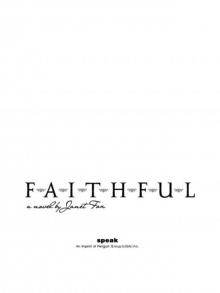 Faithful
Faithful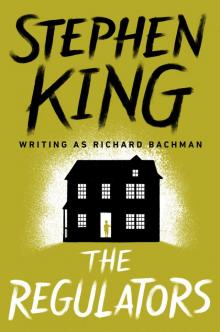 The Regulators
The Regulators A Bedroom in the Wee Hours of the Morning
A Bedroom in the Wee Hours of the Morning Graveyard Shift
Graveyard Shift The Monkey
The Monkey Children of the Corn
Children of the Corn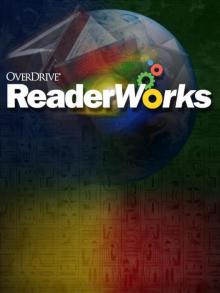 The Reploids
The Reploids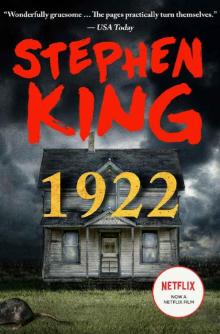 1922
1922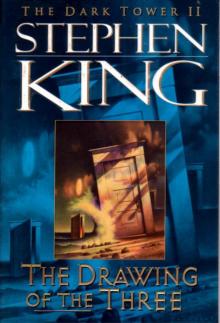 Darktower 2 - The Drawing of the Three
Darktower 2 - The Drawing of the Three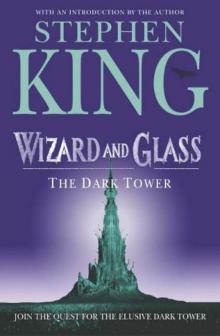 Wizard and Glass dt-4
Wizard and Glass dt-4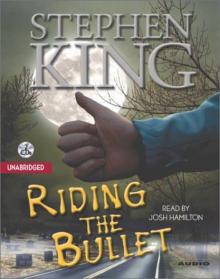 Riding The Bullet
Riding The Bullet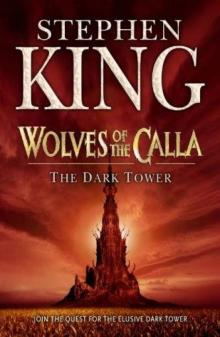 Wolves of the Calla dt-5
Wolves of the Calla dt-5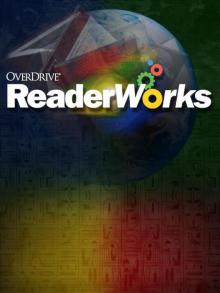 L.T.'S Theory Of Pets
L.T.'S Theory Of Pets The Langoliers fpm-1
The Langoliers fpm-1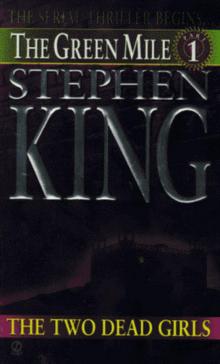 The Two Dead Girls
The Two Dead Girls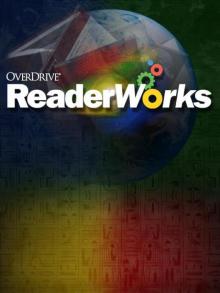 The Blue Air Compressor
The Blue Air Compressor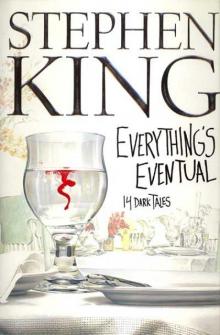 Everything's Eventual
Everything's Eventual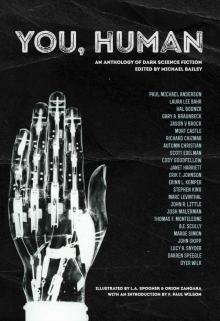 You, Human: An Anthology of Dark Science Fiction
You, Human: An Anthology of Dark Science Fiction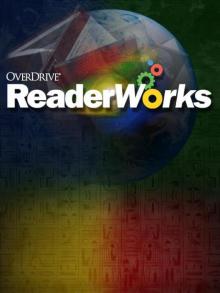 The Night of The Tiger
The Night of The Tiger The Regulators (richard bachman)
The Regulators (richard bachman)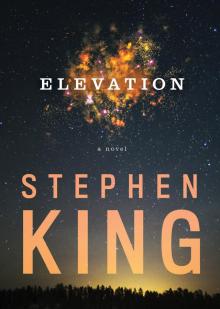 Elevation
Elevation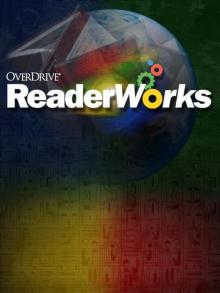 The Road Virus Heads North
The Road Virus Heads North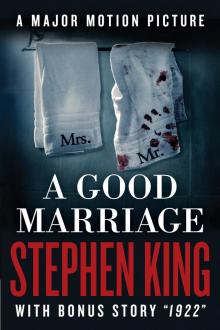 Good Marriage
Good Marriage Four Past Midnight - 5 - The Library Policeman
Four Past Midnight - 5 - The Library Policeman Grey Matter
Grey Matter Herman Wouk Is Still Alive
Herman Wouk Is Still Alive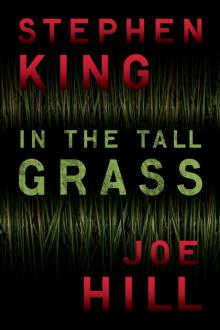 In the Tall Grass
In the Tall Grass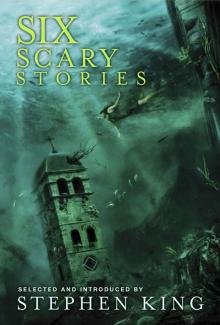 Six Scary Stories
Six Scary Stories Foreward
Foreward The Crate
The Crate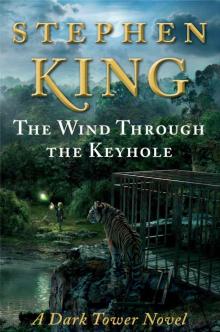 The wind through the keyhole adt-8
The wind through the keyhole adt-8 King, Stephen - Battleground
King, Stephen - Battleground The Wedding Gig
The Wedding Gig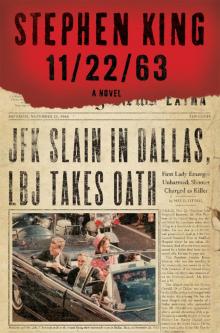 11/22/63: A Novel
11/22/63: A Novel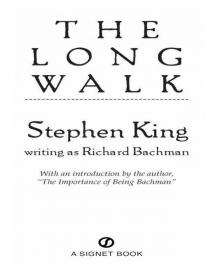 The Long Walk
The Long Walk